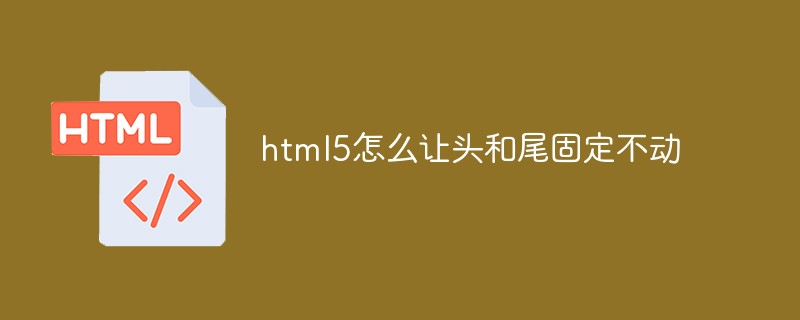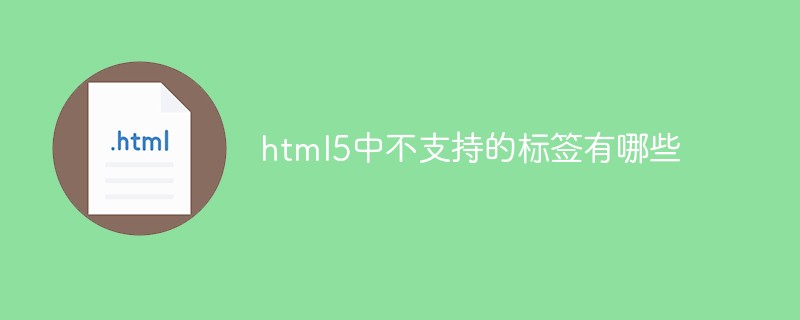DOM is a very important part of the Web front-end field. DOM is used not only when processing HTML elements, but also in graphic programming. For example, in SVG drawing, various graphics are inserted into the page in the form of DOM nodes, which means that graphics can be manipulated using DOM methods. For example, if there is a
Limitations of Canvas
In Canvas, all graphics are drawn on the frame. The drawing method will not output the drawn graphic elements as a return value, and js cannot obtain the drawn graphic elements. For example:
cvs = document.getElementById('mycanvas' );
ctx = canvas.getContext('2d');
theRect = ctx.rect(10, 10, 100, 100);
ctx.stroke();
console.log( theRect); //undefined
This code draws a rectangle in the canvas tag. First of all, you can see that the rect method for drawing graphics has no return value. If you open the browser's developer tools, you can also see that no content has been added inside the canvas tag, and the canvas element and the current context obtained in js do not have any content indicating the new graphics.
So, the DOM methods commonly used on the front end are not applicable in canvas. For example, if you click on the rectangle in the Canvas above, you will actually click on the entire Canvas element.
Bind events to the Canvas element
Since the event can only reach the Canvas element level, if you want to go further and identify which graphic inside the Canvas the click occurred on, you need to add code for processing. The basic idea is: bind an event to the Canvas element. When the event occurs, check the position of the event object, and then check which graphics cover that position. For example, in the above example, a rectangle was drawn, which covers the range of 10-110 on the x-axis and 10-110 on the y-axis. As long as the mouse is clicked within this range, it can be regarded as clicking on the rectangle, and the click event that needs to be processed by the rectangle can be manually triggered. The idea is actually relatively simple, but the implementation is still a bit complicated. Not only must the efficiency of this judgment process be considered, but event types also need to be re-judged in some places, and the capture and bubbling mechanism inside Canvas must be redefined.
The first thing to do is to bind an event to the Canvas element. For example, if you want to bind a click event to a graphic inside the Canvas, you need to proxy the event through the Canvas element:
cvs = document.getElementById('mycanvas' );
cvs.addEventListener('click', function(e){
//...
}, false);
Next, you need to determine the location where the event object occurs. The layerX and layerY attributes of the event object e represent the coordinates in the Canvas internal coordinate system. However, Opera does not support this attribute, and Safari plans to remove it, so we need to make some compatible writing methods:
function getEventPosition(ev){
var x, y;
if (ev.layerX || ev.layerX == 0) {
x = ev.layerX;
y = ev.layerY;
} else if (ev. offsetX || ev.offsetX == 0) { // Opera
x = ev.offsetX;
y = ev.offsetY;
}
return {x: x, y: y};
}
//Note: To use the above function, you need to set the position of the Canvas element to absolute.
Now that we have the coordinate position of the event object, we need to determine which graphics in the Canvas cover this coordinate.
isPointInPath method
The isPointInPath method of Canvas can determine whether the current context graphic covers a certain coordinate, such as:
cvs = document.getElementById('mycanvas' );
ctx = canvas.getContext('2d');
ctx.rect(10, 10, 100, 100);
ctx.stroke();
ctx.isPointInPath(50, 50); //true
ctx.isPointInPath(5, 5); //false
Next, add an event judgment to determine whether a click event occurs on the rectangle:
cvs.addEventListener('click', function (e){
p = getEventPosition(e);
if(ctx.isPointInPath(p.x, p.y)){
//Clicked the rectangle
}
}, false);
The above is the basic method of handling Canvas events, but the above code has limitations. Since the isPointInPath method only determines the path in the current context, when multiple graphics have been drawn in the Canvas, only The event can be judged based on the context of the last graphic, for example:
cvs = document.getElementById('mycanvas');
ctx = canvas.getContext('2d');
ctx.beginPath();
ctx.rect(10, 10, 100, 100);
ctx.stroke();
ctx.isPointInPath(20, 20); //true
ctx.beginPath();
ctx.rect(110, 110, 100 , 100);
ctx.stroke();
ctx.isPointInPath(150, 150); //true
ctx.isPointInPath(20, 20); //false
As you can see from the above code, the isPointInPath method can only identify the graphics path in the current context, and the previously drawn path cannot be judged retrospectively. The solution to this problem is: when a click event occurs, redraw all graphics, and use the isPointInPath method for each one drawn to determine whether the event coordinates are within the coverage of the graphics.
Loop repaint and event bubbling
In order to achieve cyclic redrawing, the basic parameters of the graphics must be saved in advance:
arr = [
{x:10, y:10, width:100, height:100},
{x:110, y:110, width: 100, height:100}
];
cvs = document.getElementById('mycanvas');
ctx = canvas.getContext('2d');
draw( );
function draw(){
ctx.clearRech(0, 0, cvs.width, cvs.height);
arr.forEach(function(v){
ctx. beginPath();
ctx.rect(v.x, v.y, v.width, v.height);
ctx.stroke();
});
}
The above code saves the basic parameters of the two rectangles in advance. Each time the draw method is called, these basic parameters will be called in a loop to draw the two rectangles. The clearRect method is also used here to clear the canvas when redrawing. The next thing to do is to add event delegates and use the isPointInPath method on each context when redrawing:
cvs.addEventListener('click', function (e){
p = getEventPosition(e);
draw(p);
}, false);
When the event occurs, pass the coordinates of the event object to draw method processing. Some small changes need to be made to the draw method here:
function draw(p){
var who = [];
ctx.clearRech(0, 0, cvs.width, cvs.height);
arr.forEach(function(v, i){
ctx.beginPath();
ctx.rect(v.x, v.y, v.width, v.height);
ctx.stroke();
if(p && ctx.isPointInPath(p.x, p.y)){
// If event coordinates are passed in, use isPointInPath to determine
//If the current environment covers the coordinates, put the index value of the current environment into the array
who.push(i);
}
});
//According to the index value in the array, the corresponding element can be found in the arr array.
return who;
}
In the above code, when the click event occurs, the draw method will perform a redraw, and during the redraw process, check whether each graphic covers the event coordinates. If the judgment is true, the graphic is deemed to be clicked, and Put the index value of the graphic into the array, and finally use the array as the return value of the draw method. Under this processing mechanism, if there are N graphics in the Canvas, part of them overlaps, and the click event happens to occur in this overlapping area, then there will be N members in the return array of the draw method. At this time, it is a bit similar to the situation of event bubbling. The last member of the array is at the top of the Canvas, and the first member is at the bottom. We can think that the top member is e.target, and the other members are e.target. The node passed to during the bubble process. Of course, this is just the simplest processing method. If you really want to simulate DOM processing, you need to set a parent-child relationship for the graphics.
The above is the basic method of Canvas event handling. In actual application, how to cache graphics parameters, how to perform loop redrawing, and how to handle event bubbling all need to be dealt with according to the actual situation. In addition, click is an event that is relatively easy to handle. The relatively troublesome events are mouseover, mouseout and mousemove. Since once the mouse enters the Canvas element, the mousemove event always occurs, so if you want to set mouseover or mouseout separately for a certain graphic , you also need to record the route of the mouse movement and set the entry and exit status for the graphics. As the processing steps become more complex, increased attention must be paid to performance issues.
 html5的div一行可以放两个吗Apr 25, 2022 pm 05:32 PM
html5的div一行可以放两个吗Apr 25, 2022 pm 05:32 PMhtml5的div元素默认一行不可以放两个。div是一个块级元素,一个元素会独占一行,两个div默认无法在同一行显示;但可以通过给div元素添加“display:inline;”样式,将其转为行内元素,就可以实现多个div在同一行显示了。
 html5中列表和表格的区别是什么Apr 28, 2022 pm 01:58 PM
html5中列表和表格的区别是什么Apr 28, 2022 pm 01:58 PMhtml5中列表和表格的区别:1、表格主要是用于显示数据的,而列表主要是用于给数据进行布局;2、表格是使用table标签配合tr、td、th等标签进行定义的,列表是利用li标签配合ol、ul等标签进行定义的。
 html5怎么让头和尾固定不动Apr 25, 2022 pm 02:30 PM
html5怎么让头和尾固定不动Apr 25, 2022 pm 02:30 PM固定方法:1、使用header标签定义文档头部内容,并添加“position:fixed;top:0;”样式让其固定不动;2、使用footer标签定义尾部内容,并添加“position: fixed;bottom: 0;”样式让其固定不动。
 HTML5中画布标签是什么May 18, 2022 pm 04:55 PM
HTML5中画布标签是什么May 18, 2022 pm 04:55 PMHTML5中画布标签是“<canvas>”。canvas标签用于图形的绘制,它只是一个矩形的图形容器,绘制图形必须通过脚本(通常是JavaScript)来完成;开发者可利用多种js方法来在canvas中绘制路径、盒、圆、字符以及添加图像等。
 html5中不支持的标签有哪些Mar 17, 2022 pm 05:43 PM
html5中不支持的标签有哪些Mar 17, 2022 pm 05:43 PMhtml5中不支持的标签有:1、acronym,用于定义首字母缩写,可用abbr替代;2、basefont,可利用css样式替代;3、applet,可用object替代;4、dir,定义目录列表,可用ul替代;5、big,定义大号文本等等。
 html5废弃了哪个列表标签Jun 01, 2022 pm 06:32 PM
html5废弃了哪个列表标签Jun 01, 2022 pm 06:32 PMhtml5废弃了dir列表标签。dir标签被用来定义目录列表,一般和li标签配合使用,在dir标签对中通过li标签来设置列表项,语法“<dir><li>列表项值</li>...</dir>”。HTML5已经不支持dir,可使用ul标签取代。
 Html5怎么取消td边框May 18, 2022 pm 06:57 PM
Html5怎么取消td边框May 18, 2022 pm 06:57 PM3种取消方法:1、给td元素添加“border:none”无边框样式即可,语法“td{border:none}”。2、给td元素添加“border:0”样式,语法“td{border:0;}”,将td边框的宽度设置为0即可。3、给td元素添加“border:transparent”样式,语法“td{border:transparent;}”,将td边框的颜色设置为透明即可。
 html5是什么意思Apr 26, 2021 pm 03:02 PM
html5是什么意思Apr 26, 2021 pm 03:02 PMhtml5是指超文本标记语言(HTML)的第五次重大修改,即第5代HTML。HTML5是Web中核心语言HTML的规范,用户使用任何手段进行网页浏览时看到的内容原本都是HTML格式的,在浏览器中通过一些技术处理将其转换成为了可识别的信息。HTML5由不同的技术构成,其在互联网中得到了非常广泛的应用,提供更多增强网络应用的标准机。


Hot AI Tools

Undresser.AI Undress
AI-powered app for creating realistic nude photos

AI Clothes Remover
Online AI tool for removing clothes from photos.

Undress AI Tool
Undress images for free

Clothoff.io
AI clothes remover

AI Hentai Generator
Generate AI Hentai for free.

Hot Article

Hot Tools

Notepad++7.3.1
Easy-to-use and free code editor

MantisBT
Mantis is an easy-to-deploy web-based defect tracking tool designed to aid in product defect tracking. It requires PHP, MySQL and a web server. Check out our demo and hosting services.

DVWA
Damn Vulnerable Web App (DVWA) is a PHP/MySQL web application that is very vulnerable. Its main goals are to be an aid for security professionals to test their skills and tools in a legal environment, to help web developers better understand the process of securing web applications, and to help teachers/students teach/learn in a classroom environment Web application security. The goal of DVWA is to practice some of the most common web vulnerabilities through a simple and straightforward interface, with varying degrees of difficulty. Please note that this software

EditPlus Chinese cracked version
Small size, syntax highlighting, does not support code prompt function

SublimeText3 Linux new version
SublimeText3 Linux latest version






